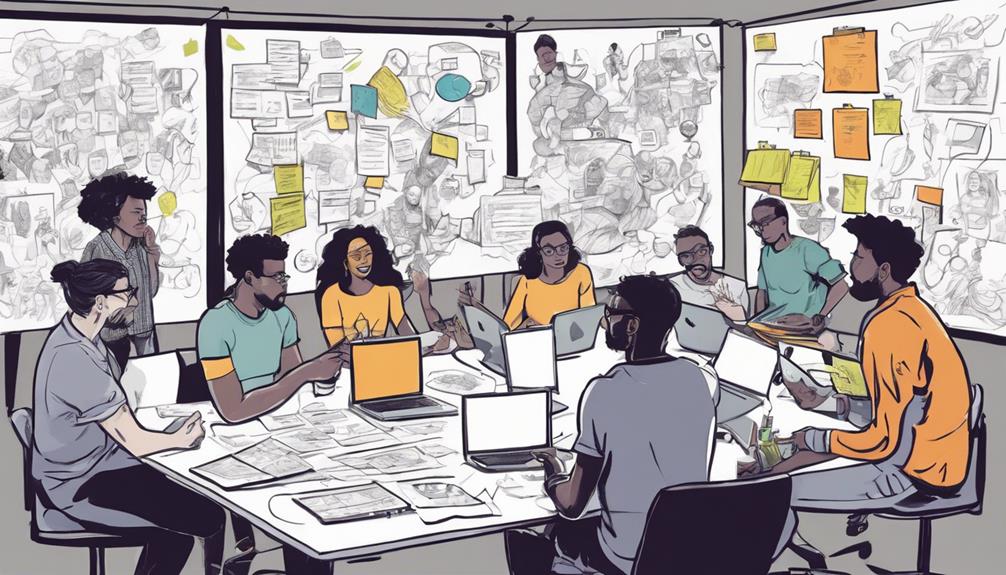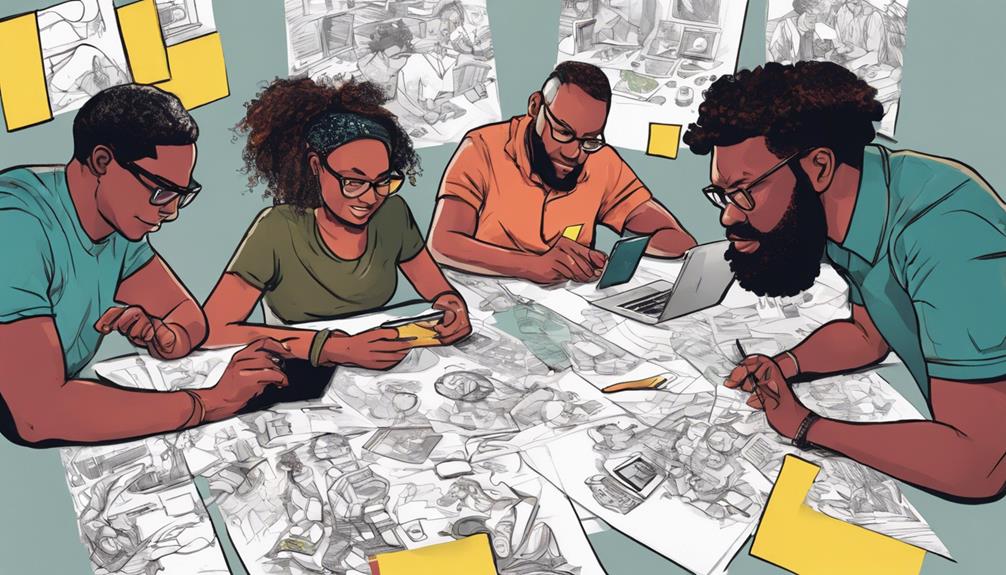In human-centered design thinking, prioritize users by focusing on their needs, behaviors, and pain points. This approach drives innovation and boosts customer satisfaction. By embracing this mindset, you make certain that real people are at the core of the design process, leading to impactful solutions. If you want to discover more about how human-centered design can transform your approach to problem-solving, find out about the design thinking process, examples of successful implementations, leveraging design for business success, the role of empathy, benefits of design thinking, and future trends in design innovation.
Key Takeaways
- Prioritize users' needs, behaviors, and pain points.
- Focus on understanding users' motivations and challenges.
- Foster empathy-driven mindset for accurate problem-solving.
- Promote collaboration and diverse perspectives for co-creating solutions.
- Place users at the core of the design process for user-centered solutions.
Understanding Human-Centered Design
To grasp the essence of Human-Centered Design, you must understand its core principle of prioritizing real people in the problem-solving process. This design approach revolves around putting users at the forefront of the entire design process. By focusing on users' needs, behaviors, and pain points, Human-Centered Design guarantees that solutions are tailored to address specific user requirements effectively.
This design philosophy emphasizes the importance of empathizing with users to gain deep insights into their explicit and latent needs. By immersing yourself in the users' perspectives and experiences, you can uncover valuable information that guides the creation of innovative and impactful solutions. Human-Centered Design encourages designers to step into the shoes of the users, fostering a deeper understanding of the problem at hand and leading to more meaningful outcomes.
Through Human-Centered Design, the process of clarifying customer needs, ideating creative solutions, developing prototypes, and implementing innovative products is driven by a profound connection with the end-users. This user-centric approach not only spurs continuous innovation but also enhances customer satisfaction by addressing their unique challenges effectively.
The Design Thinking Process
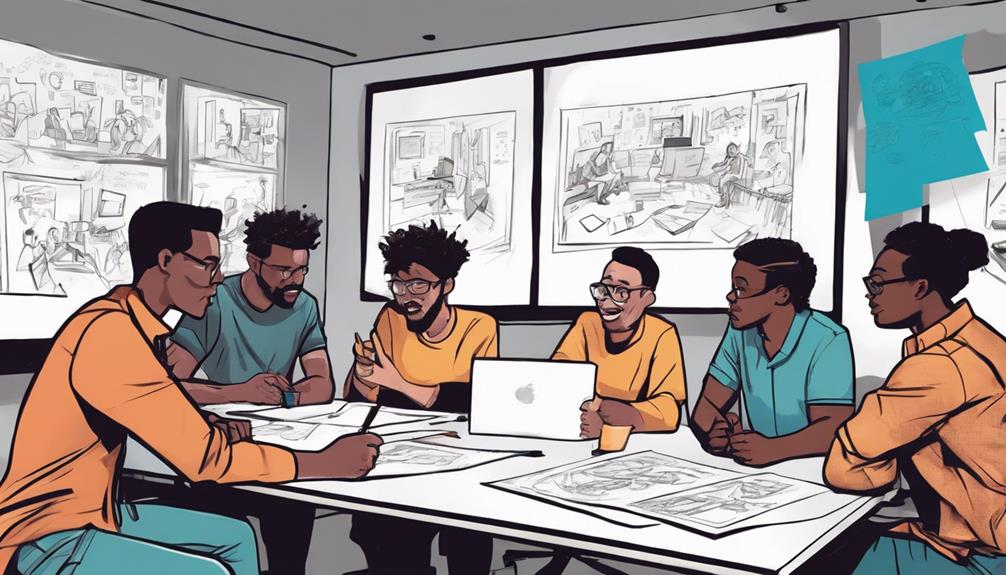
Let's break down the design thinking process into its key components: the overview, process steps, and key principles.
By understanding these elements, you can navigate through the stages effectively and create innovative solutions that cater to users' needs.
Emphasizing customer-centricity and iterative problem-solving, the design thinking process fosters a deep connection with users to drive impactful design outcomes.
Design Thinking Overview
The Design Thinking Process encompasses stages like empathize, define, ideate, prototype, and test. It is a systematic approach to solving complex problems. This design process places a strong emphasis on human-centered design, where user research and empathy play pivotal roles in problem-solving.
By understanding user needs, motivations, and behaviors, design thinkers can create innovative solutions that truly resonate with the end-users. This methodology enables a continuous feedback loop, ensuring that the final product meets user expectations effectively.
Rooted in customer-centricity, design thinking humanizes problems by focusing on emotional aspects and real-world experiences. While design-led firms have excelled in enhancing customer experience, the essence of design thinking lies in its ability to foster creativity and out-of-the-box thinking.
Although design thinking gained significant popularity in 2015, its foundations can be traced back to the 1950s, emphasizing the timelessness and effectiveness of this problem-solving approach.
Process Steps
Design Thinking Process involves a sequence of five stages that guide you through solving complex problems in a user-centered manner. These stages are essential for creating innovative solutions that truly resonate with users:
- Empathize: Begin by understanding the users' needs, motivations, and challenges to gain valuable insights.
- Define: Clearly articulate the problem based on the insights gathered during the empathize stage to ensure a focused approach.
- Ideate: Generate a wide range of creative ideas without judgment to explore different possibilities.
- Prototype: Build tangible representations of your ideas to test and gather feedback from users effectively.
Each stage in the Design Thinking Process plays a crucial role in fostering a human-centered approach to design. By empathizing with users, defining the problem, ideating creative solutions, prototyping them, and testing with users, you can iteratively develop solutions that truly address users' needs and preferences.
Key Principles
Emphasizing empathy and creativity, key principles in the Design Thinking Process involve promoting collaboration and iteration to develop user-centered solutions. By placing the user at the core of the design process, Design Thinking aims to truly comprehend customers' needs and challenges. This customer-centric approach enables the creation of innovative solutions that resonate with users on a deeper level.
Design Thinking encourages teams to empathize with users, gaining insights into their experiences and preferences. This empathy-driven mindset helps in defining the problem accurately and generating creative ideas to address it effectively.
Through collaboration, diverse perspectives come together to ideate and co-create solutions that cater to various user requirements.
Furthermore, the iterative nature of the Design Thinking process allows for rapid prototyping and testing of concepts. This iterative cycle guarantees that solutions are refined based on user feedback, leading to the development of products and services that genuinely meet user needs.
Examples of Human-Centered Design
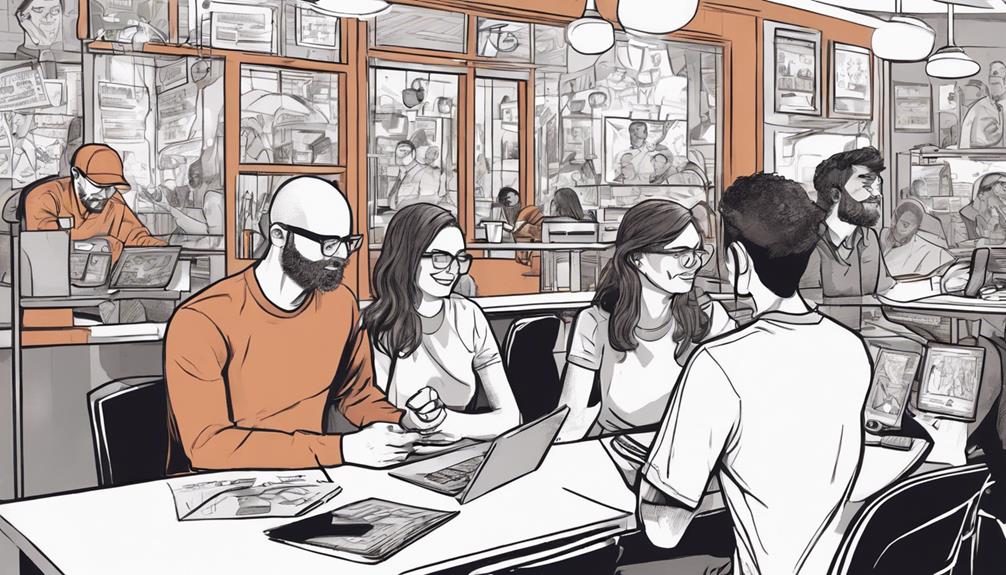
Discover how design success stories like Colgate's Motion toothbrush and Spotify's music solution showcase impactful user solutions and creative problem-solving through human-centered design.
These examples illustrate how companies can meet specific user needs effectively, leading to innovative products like Fitbit's fitness tracker and HelloFresh's meal options.
Design Success Stories
Several notable companies have achieved design success through their implementation of human-centered principles. Here are some examples:
- Fitbit's focus on user needs for fitness tracking revolutionized the wearable technology industry.
- Spotify's personalized music recommendations have enhanced user experiences and set a new standard for music streaming services.
- Colgate's Motion toothbrush, designed with children in mind, showcases how user-centric design can drive product innovation in everyday items.
- IDEO's collaboration with Apple to create the user-friendly mouse highlights the power of observation and user feedback in designing intuitive products.
HelloFresh's custom meal options tailored to individual preferences exemplify how human-centered design can lead to the creation of products that customers truly appreciate.
These success stories demonstrate the impact of placing users at the core of the design process, ultimately resulting in products that meet real user needs and preferences.
Impactful User Solutions
Highlighting the transformative impact of human-centered design, here are examples of impactful user solutions that have revolutionized industries and enhanced user experiences.
Colgate's Motion toothbrush addressed the latent pain point of children struggling with traditional brushes by improving grip, leading to increased sales.
Leveraging human-centered design, Spotify's personalized playlists catered to customers' perspectives, enhancing user satisfaction.
Fitbit's fitness tracker, developed with users' needs in mind, tracked activity data, offering a potential solution to promote healthier lifestyles.
HelloFresh simplified meal planning and cooking, saving time and effort for users with underserved needs in the meal preparation space.
IDEO's Apple mouse design exemplified the power of human-centered design by revolutionizing computer navigation through user-friendly features.
These examples showcase how understanding customers' perspectives, identifying latent pains, and addressing underserved needs through human-centered design can lead to impactful solutions that elevate user experiences across various industries.
Creative Problem-Solving
How can human-centered design lead to innovative solutions that creatively solve user problems and enhance experiences?
Human-centered design thrives on the creative process of problem-solving to address users' needs effectively. By putting users at the core of the design process, companies have been able to develop products that revolutionize user experiences.
Here are some examples of human-centered design in action:
- The Colgate Motion toothbrush: Designed to cater to users looking for a more interactive and engaging brushing experience.
- Spotify's personalized music solution: Tailored to individual preferences, providing a unique and customized listening experience for each user.
- Fitbit's fitness tracker: Created to motivate and assist users in achieving their health and fitness goals through intuitive design and features.
- The Apple mouse: A product of IDEO's human-centered design approach, offering a seamless and user-friendly interaction for Mac users.
These examples showcase how human-centered design can spark creativity and lead to solutions that truly resonate with users, ultimately enhancing their overall experience.
Leveraging Design for Business Success
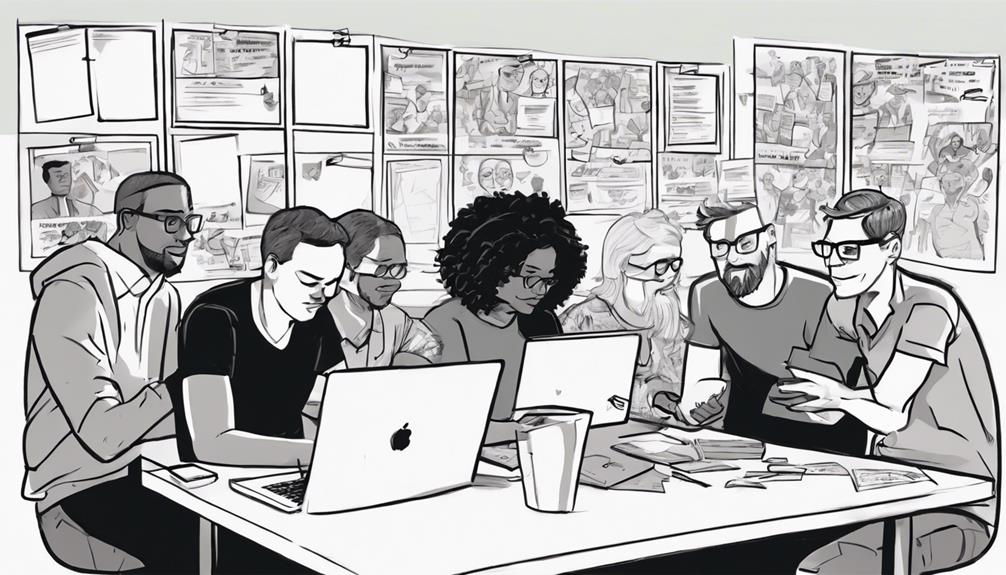
Leverage design thinking to drive business success by prioritizing user needs and preferences in product development. Understanding customers' wants and needs is pivotal for creating a successful product or service. By adopting an experimentation mindset and developing solutions based on putting people at the center, businesses can clarify the problem they're solving and tailor their offerings accordingly. This approach not only leads to higher customer satisfaction and loyalty but also helps in avoiding startup failures.
To implement human-centered design effectively, businesses can consider taking a Design Thinking and Innovation course. This course can provide valuable insights on how to apply human-centered design principles in practice, enabling companies to gain a competitive edge in the market. Additionally, utilizing a free flowchart to find the right course can guide businesses in choosing the most suitable learning path for successful human-centered design implementation.
The Role of Empathy in Design
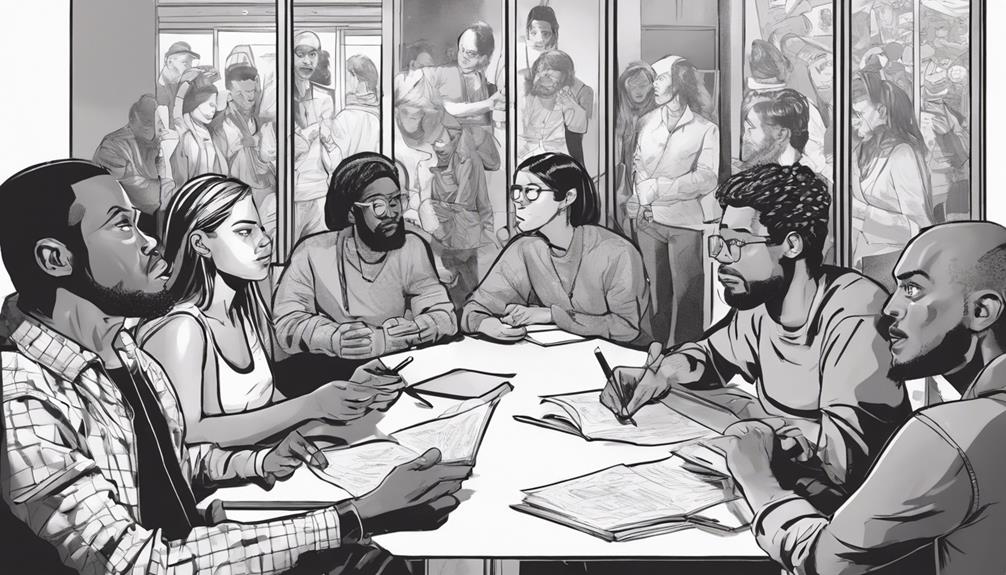
Understanding the essential role of empathy in design involves actively listening, observing, and immersing yourself in the users' environment to deeply grasp their needs. By engaging in collaborative interviews and conducting observational research, designers can uncover users' pain points and challenges. This information is then synthesized into actionable insights to develop user-centered solutions.
Designers work closely with leaders and users to co-create and test innovative solutions that address real user needs. The role of empathy in design is vital for creating meaningful and impactful solutions that enhance the human experience.
- Empathy: Listening and understanding the users' emotions and perspectives.
- Collaborative Interviews: Engaging with users to gather insights and feedback.
- Observational Research: Observing users in their natural environment to uncover behaviors and needs.
- User-Centered Solutions: Designing solutions that directly address the identified user needs and challenges.
Benefits of Design Thinking
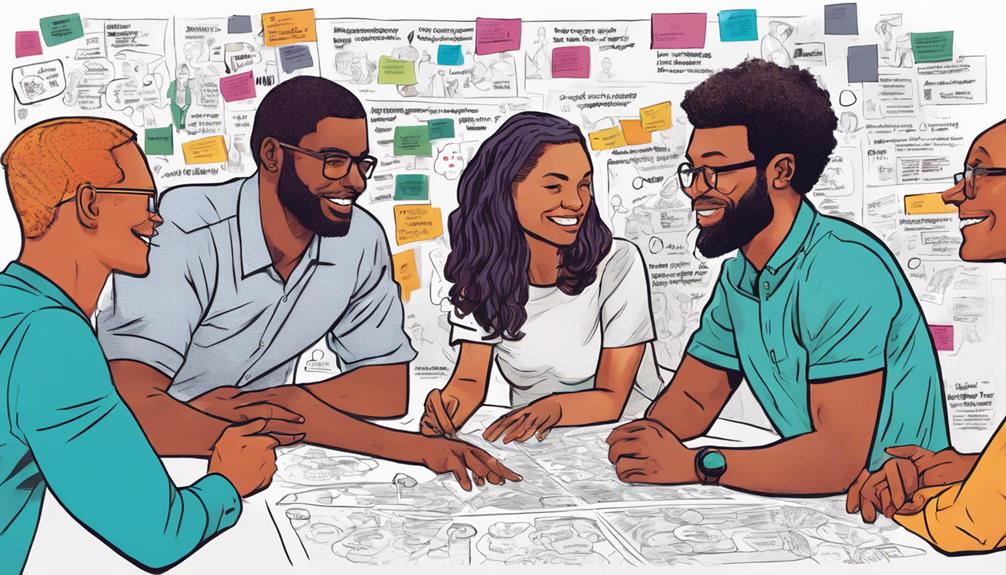
Design thinking offers numerous benefits to organizations seeking to enhance user satisfaction, drive innovation, and achieve a competitive edge in the market. By focusing on users' needs and preferences, design thinking helps determine effective value propositions that resonate with the target audience. This approach leads to improved customer experiences, as solutions are tailored to address specific pain points and preferences, ultimately fostering loyalty and satisfaction.
Here is a breakdown of the benefits of design thinking:
| Benefits | Description |
|---|---|
| Enhanced User Satisfaction | Prioritizing user needs leads to solutions that truly address their problems |
| Drive Innovation | Focus on creating user-centric products can lead to competitive advantage |
| Cost and Time Efficiency | By reducing development costs and time-to-market, companies stay agile |
Moreover, design thinking encourages collaborative group dynamics, leveraging diverse perspectives to generate potential solutions that are innovative and impactful. By embracing this approach, organizations can create products and services that not only meet but exceed user expectations, resulting in increased revenue, market share, and overall brand reputation.
Future Trends in Design Innovation
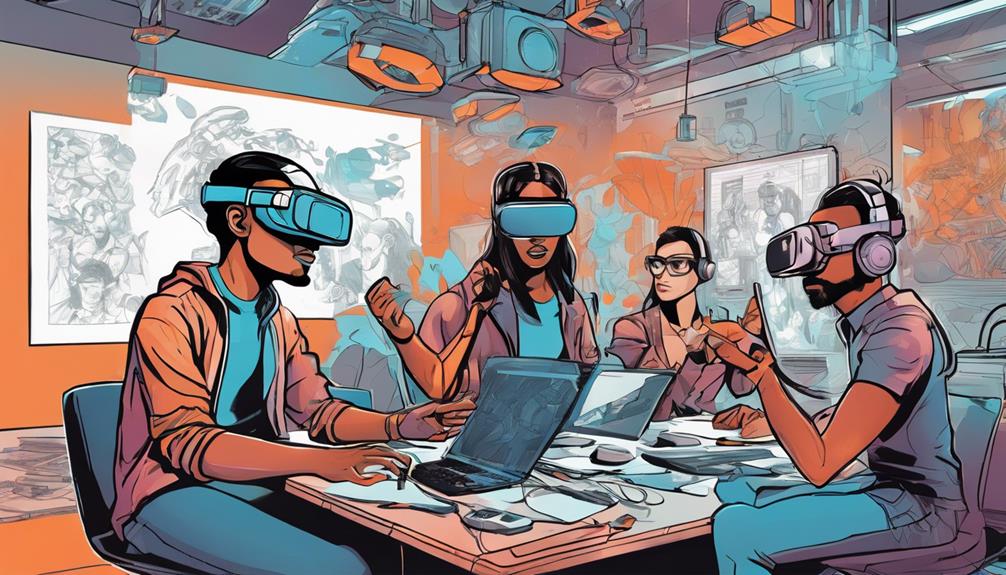
To stay ahead in the ever-evolving landscape of design innovation, it's essential to embrace emerging trends that focus on personalization, immersive technologies, and interdisciplinary collaboration.
As design continues to evolve, here are some key future trends to keep in mind:
- Personalization: Integrating AI and machine learning to customize products based on individual user preferences.
- Immersive Technologies: Utilizing VR and AR to create emotionally captivating user experiences.
- Accessibility and Inclusivity: Shifting the emphasis towards designing for all users, regardless of abilities or backgrounds.
- Collaboration: Encouraging cross-disciplinary teamwork between fields such as design, engineering, and psychology to drive innovation.
Frequently Asked Questions
What Is the First Step in the Human-Centered Design Process?
The first step in the human-centered design process is the Clarify phase. You collect data, determine customer needs, and identify pain points. User research helps understand explicit and latent needs from their perspective.
What Is the Main Priority of User-Centered Design?
In user-centered design, your main priority is YOU! Understanding your needs, preferences, and experiences drives tailored solutions that enhance satisfaction and loyalty. By putting YOU first, businesses innovate, gain an edge, and increase customer investment.
What Are the 4 Phases of Human-Centered Design?
You should know the 4 phases of Human-Centered Design: Clarify, Ideate, Develop, and Implement. These involve collecting data, generating ideas, meeting user needs, and communicating innovation value. Put users first in all steps.
What Is the Human-Centered Approach in Design Thinking?
To understand the human-centered approach in design thinking, you prioritize users' needs, behaviors, and preferences. By empathizing with users, you uncover insights that drive innovative solutions. Designers create products resonating emotionally and practically with users.
Conclusion
So, have you ever considered putting users at the heart of your design process?
By embracing human-centered design thinking, you can create innovative solutions that truly meet the needs and desires of your target audience.
With empathy, creativity, and a focus on user experience, you can reveal endless possibilities for business success.
So, why not start putting users first and revolutionize the way you approach design?
